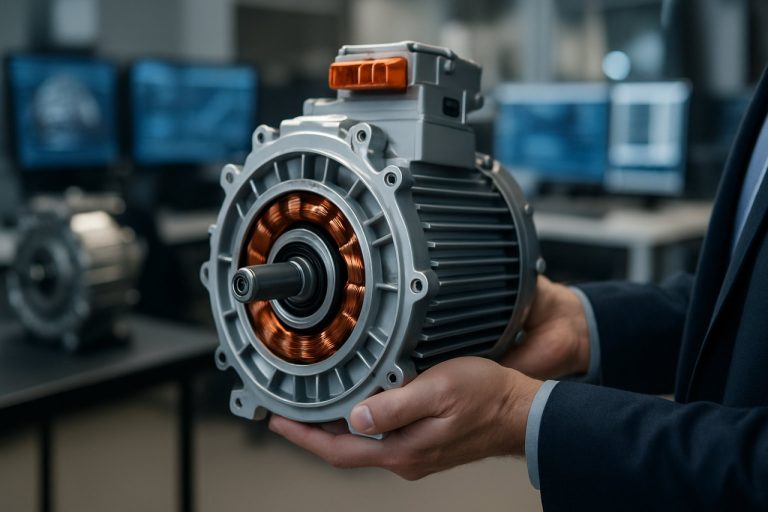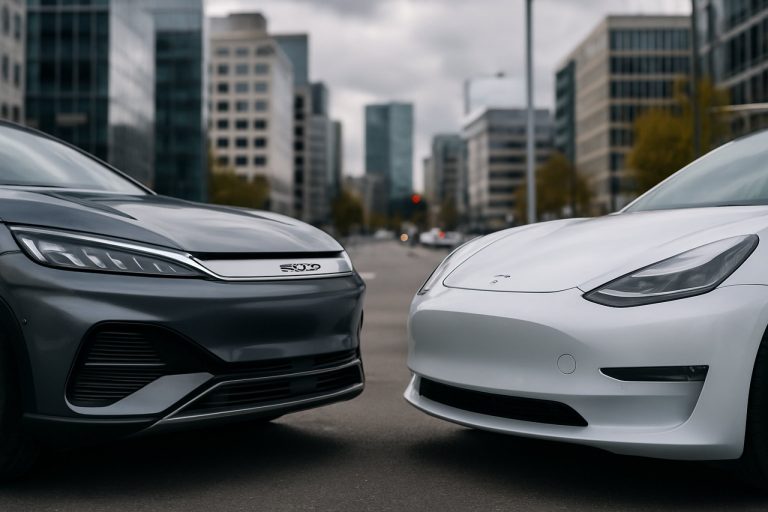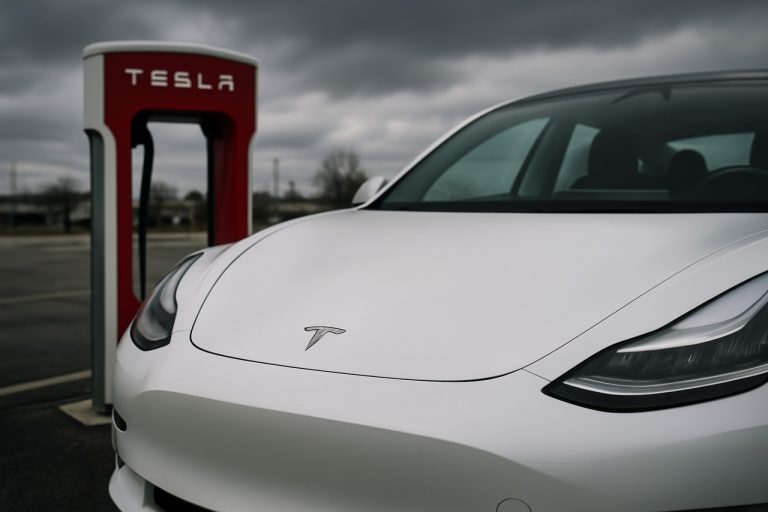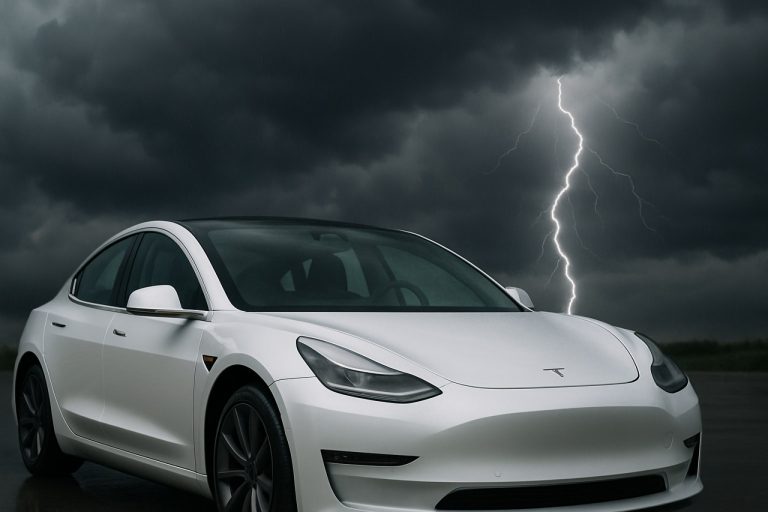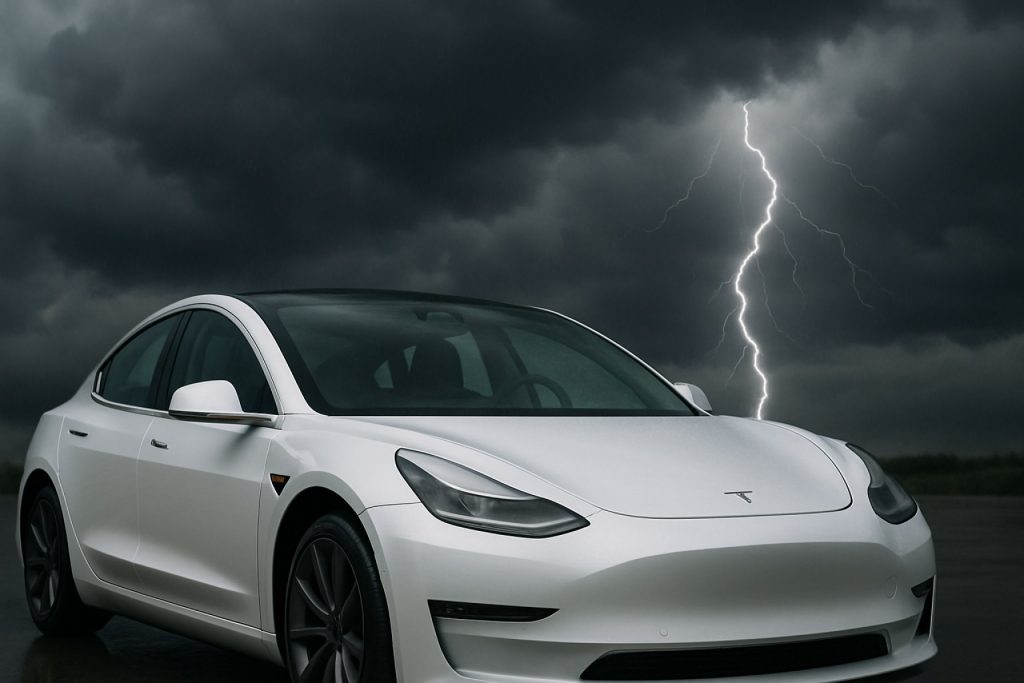
- Tesla’s dominance in electric vehicles is challenged by declining trust, market shifts, and unmet self-driving promises.
- Policy reversals—such as ending buyout restrictions on leased vehicles—have strained customer loyalty and eroded credibility.
- Cybertruck sales and prices have dropped dramatically, with rivals like Ford’s F-150 Lightning outselling Tesla’s pickup in key markets.
- Intense competition, price declines across Tesla’s lineup, and global trade pressures further threaten profitability.
- Elon Musk’s public controversies and shifting product strategies impact Tesla’s brand reputation and global sales.
- Tesla’s legacy in innovation is undisputed, but restoring trust and consistency is crucial if the company hopes to maintain industry leadership.
Sudden sunlight on wet asphalt is never more jarring than when it jolts a once-unstoppable giant to a halt. Few companies have captured the cultural imagination like Tesla, blazing trails and bulldozing through skepticism with feats of innovation. Now, the gleam is clouded—not by dust, but by accumulating troubles that threaten the sense of trust and inevitability once woven around the iconic automaker.
Step back twelve months and the energy around Tesla felt near-mythical. Electric vehicles, once a peripheral idea, had become symbols of progress, with Tesla as their standard-bearer. The company’s obsessive pursuit of “full self-driving” and ambitious rumors of a driverless “robotaxi” fleet stoked imaginations and stock prices alike. Investors and fans braced for a future where highways hummed with whisper-quiet autonomy. Yet, the reality on the roads today reveals a company straining beneath the weight of its promises.
Cracks in Credibility
An unexpected policy shift last year hit loyal customers hard. For years, those leasing Teslas in the U.S. were told they couldn’t buy their cars after the lease ended—because, officially, Tesla needed these vehicles for its self-driving taxi program. The world waited, but the robotaxi revolution fizzled; the cars became simple used vehicles sold at premium prices to an eager market, often after little more than over-the-air updates. For longtime drivers, the sudden change felt like a breach of an unwritten bond—Tesla wasn’t just innovating; it was reshuffling the deck.
The Cybertruck Fades Into the Mist
If the leap into robotics stumbled, the company’s earth-bound ambitions haven’t fared better. The Cybertruck, armored in stainless steel and defiance, debuted as an icon of the future—a defiant answer to Detroit’s legacy giants. But its journey has proven rockier than its angular silhouette suggests. In the past year, average selling prices for the Cybertruck cratered by nearly 46%. Price tags for other models, like the ever-popular Model Y, dropped more than 14%. The entire Tesla lineup, according to CarGurus data, has seen values fall far faster than the rest of the market, amplifying the financial pain for would-be resellers.
Rival automakers are seizing the moment. Ford’s F-150 Lightning, roomier and arguably constructed with a more traditional sense of truck utility, outsold the Cybertruck in March and through the first quarter of the year. S&P Global Mobility reports show registrations for the Lightning topping Tesla’s once-mighty challenger—shattering the assumption that “future” always means “Tesla.”
Troubles Add Up
External pressures compound the turmoil. Trade tensions—particularly new tariffs—threaten to squeeze profits. Meanwhile, CEO Elon Musk’s high-profile political maneuverings, polarizing even among die-hard fans, inject chaos into the brand’s once pristine aura. Sales in key international markets drop as both consumers and supporters abroad reconsider their allegiances, eyeing alternatives in a fast-crowding field.
All this comes against the backdrop of Tesla’s immense contributions to the rise of electric cars. The company set a standard, shattered records, and pulled the entire industry into a new era. But now, lapses in transparency, drifting performance promises, and bruising competition put that legacy at risk.
Key Takeaway: Trust, once broken, is hard to restore. For Tesla, the path ahead isn’t just about the next invention—it’s about regaining the reliability that fueled its ascent. As the market matures and other formidable players rise, the company’s ability to listen, adapt, and deliver consistently will determine whether it remains a leader—or becomes a cautionary tale.
To follow the evolving electric vehicle landscape and keep up with the latest in automotive innovation, visit Tesla and Ford.
The sky above Tesla is very much in flux. The question now: can it weather the storm, or will the downpour wash away its shine for good?
Tesla’s Crisis: Are Elon Musk’s Broken Promises and Sliding Values Signaling the End of an EV Era?
Tesla’s story has been one of disruption, ambition, and controversy. But as innovations stall and external challenges mount, many are asking: Does Tesla still have what it takes to lead the electric vehicle (EV) revolution? Let’s dig deeper into the facts, address pressing questions, and offer practical advice for consumers and investors watching Tesla’s next moves.
Additional Facts & In-Depth Insights
1. Tesla’s Global Market Share Is Shrinking
Globally, Tesla’s lead is narrowing fast. According to S&P Global Mobility, Tesla’s share of the U.S. EV market dropped from around 70% in 2021 to 55% in 2024, as automakers like BYD, Hyundai, Kia, and legacy giants like Ford rapidly expand their EV lineups. (Tesla | S&P Global).
2. Full Self-Driving (FSD) Remains Unfulfilled
Tesla’s FSD beta program, despite a $12,000 (now reduced to $8,000) upfront cost for buyers, is still classified as Level 2 driver assistance—not true autonomy (SAE J3016 standard). Widespread regulatory acceptance remains elusive, and multiple incidents involving FSD-equipped Teslas have drawn scrutiny from the NHTSA and global safety regulators.
3. Recall Concerns
Tesla’s over-the-air software update system—once lauded for its agility—has been a double-edged sword. In 2023 alone, Tesla issued multiple software-based recalls (over 2 million cars for Autopilot system warnings and FSD-related concerns). Critics argue these updates sometimes mask deeper hardware or systems issues.
4. Price Volatility Impacts Resale and Consumer Confidence
– Tesla’s aggressive price cuts have made new vehicles cheaper, but this also causes significant depreciation for existing owners.
– Edmunds reports the average Tesla lost 28.5% in resale value in just 12 months—higher than most EV competitors and far above the industry average.
5. International Troubles & Tariffs
Recent U.S. tariff hikes on Chinese EVs (effective June 2024) squeeze profitability on China-manufactured Tesla models. In the EU, Tesla’s Model 3 and Y face stiffer competition and potential regulatory barriers. Sales growth in China is also threatened by local brands like BYD, XPeng, and Nio, offering comparable tech at lower prices.
6. Competition Heats Up—Not Just from Ford
– Lucid, Rivian, Hyundai, and Volkswagen continue to invest heavily in EV innovations and charging infrastructure, eroding Tesla’s early-adopter advantage.
– The Ford F-150 Lightning, as cited, outsold the Cybertruck’s initial launch volumes and is praised for practical features like bidirectional charging and traditional truck functionality (Ford).
7. Quality and Production Challenges
– Owner reviews on platforms such as Consumer Reports and J.D. Power note persistent issues with Tesla build quality, interior fit-and-finish, and service responsiveness.
– Cybertruck production, in particular, has been hampered by ramp-up delays, battery supply issues, and high-profile recalls for brake, windshield wiper, and pedal concerns.
Answering Readers’ Most Pressing Questions
Q: Is Tesla still worth the premium?
With increased competition and price volatility, Tesla’s unique selling propositions—like Supercharger access—are no longer exclusive, as Ford, GM, and Hyundai have inked deals to access the Tesla Supercharger network starting in 2025.
Q: How secure are Tesla’s technologies (e.g., Autopilot, security features)?
While Tesla’s vehicles consistently score high on crash safety, critics warn of data privacy risks and hacking vulnerabilities, especially since vehicle functions are increasingly app-dependent. Regular software updates are vital, but hardware reliance can delay implementation of crucial fixes. The NHTSA continues to monitor Autopilot’s safety record.
Q: What are the environmental and ethical considerations?
Tesla touts zero-emissions driving, but battery production (especially lithium, cobalt sourcing) creates sustainability and ethical sourcing challenges. Tesla has taken steps to increase battery recycling via partnerships and pilot projects, but transparency on materials remains limited.
Q: Will new Tesla models compete effectively?
Leaked plans suggest Tesla is pivoting to lower-cost models (“Model 2”) to stave off affordable competition from China and Europe, but timelines are unconfirmed. The Cybertruck’s tepid reception raises questions about future niche innovations versus mainstream market needs.
Q: What’s the forecast for Tesla stock and future product launches?
Analyst estimates forecast slowing topline growth and profits, with some rating Tesla as “hold” or “underperform” due to market saturation and falling margins (Reuters, Bloomberg).
Quick How-To: What Should Current or Prospective Tesla Owners Do?
1. Research Resale Value:
Use platforms like Edmunds or Kelley Blue Book for updated trade-in/resale estimates.
2. Consider Alternatives:
Compare features, pricing, and service reviews for new EVs from Ford, Hyundai, Kia, and Volkswagen.
3. Monitor Over-the-Air Updates:
Always read update notes from Tesla; check for recall advisories via the NHTSA’s VIN lookup tool.
4. Plan Your Charging Strategy:
If buying a non-Tesla EV, confirm future Supercharger compatibility or invest in reliable Level 2 home charging.
5. Stay Updated:
Follow official sources such as Tesla and Ford for recalls, innovations, and policy changes.
Pros & Cons Overview
Pros:
– Superior acceleration, performance, and connected tech features
– Extensive charging network (expanding to other brands soon)
– Strong safety scores and crash ratings
Cons:
– Price drops fuel rapid depreciation and uncertainty
– Service centers and repair wait times can be long in some regions
– Unfulfilled autonomy promises and safety concerns
Predictions & Actionable Takeaways
The EV landscape is diversifying rapidly. Tesla set the pace, but maintaining leadership now hinges on quality, transparency, after-sales service, and regaining customer trust. If you own or are considering a Tesla, stay alert to shifting values, policy changes, and emerging alternatives—competition is finally here.
Top quick tip: Before committing to any EV, carefully compare pricing, resale value, after-sales support, and charging solutions. Don’t just buy the future—buy the vehicle that fits your present needs and is built to last.
Stay informed as the auto industry shifts. Visit automaker sites for the latest updates and unbiased data-driven reviews.
